Many B2B marketers view themselves as successful when it comes to content marketing.
However, if you’ve been grinding away for many months and you’ve yet to see results from your content marketing efforts — you may be feeling a little bit frustrated.
If that’s the case, you may be wondering why your content isn’t generating leads.
In this article, we’re going to take a look at some of the reasons why certain content marketing campaigns fail to generate leads.
We’ll look at some of the common mistakes that people make in the world of content marketing and we’ll also assess how things can be turned around.
By the end of this post you should have a clear sense of how you can rejuvenate your content marketing campaign, so that it brings you fresh leads on a consistent basis.
Let’s begin!
Your content doesn’t solve problems
One of the main aims of content marketing is to help people before they actually purchase something from you.
By helping people before a transaction takes place, you’re able to do a couple of things.
First, you’re able to position yourself as an authority on the subject matter that your business is associated with.
Second, you’re able to build some goodwill and subsequent trust.
That’s because you have already demonstrated your expertise and given people strategies that they can implement in their own businesses — all without asking for anything in return.
Once people implement these strategies and find out that what you’re saying is of value, they begin to trust you more.
But what good is spending money, if you don’t use it to create the right kinds of content?
If your content is not helping people to solve a problem, readers have little reason to believe that you’re going to be of value to them.
After all, you’ve not provided them with tactics or strategies that they can implement in their own businesses to generate results — meaning they can’t accurately judge whether or not you’re the real deal.
If your content is not generating leads, you’ll want to take a long hard look at your current forms of content and ask if what you’ve produced is helping your audience solve problems.
Plus, there’s another reason you need to produce content that solves problems, and it’s this — content that doesn’t solve problems won’t be searched for in the search engines.
Here’s a graphic from Moz that explains the user experience in relation to someone using a search engine to solve a problem.
Now, this is arguably just a generalization in terms of how people use search engines, but there is a lot of truth to the above graphic.
For instance, if you’re looking to build a website, what are you going to put into the Google search engine?
Most likely it will be something like this — ‘how to build a website.’
And then, as you begin to learn more about building websites you may begin to put in search terms like this:
- ‘what is a good hosting platform,’
- ‘how to install wordpress themes’
- ‘seo tips for my website.’
As you can see, all of those keywords are entered into Google with the intent of solving a problem or learning how to achieve a specific goal (goals tend to require the overcoming of problems).
If you have content that was centered around those topics, there’s a better chance of it being found in the search engines.
It would also be of greater value to the readers.
Obviously, there is a lot of competition for those keywords, but we’re just talking hypothetically here.
If you had some content titled ‘why websites are fun,’ you can probably appreciate that people aren’t really looking to find out why websites are ‘fun.’
That’s a bit of an extreme example, though hopefully, it illustrates the point that content which doesn’t solve a problem isn’t likely to be searched for.
Note: We’re not talking about writing content for the search engines here. But what you will find is that content that solves problems naturally garners better search engine rankings.
If you want to create content that solves problems and subsequently generate leads, you must absolutely have a clear idea of who your customer is.
Otherwise, you’ll be creating non-specific content that doesn’t actually address the issues the reader is facing in their business.
So how can you go about creating specific content that solves the problems your target market is facing?
Well, more often than not, you’ll know the problems your target market is facing already.
However, if you’re entering a new niche, here are some tips on how you can find out what people are struggling with.
The most basic way to come up with content ideas is by simply empathizing with the audience you’re writing content for.
Ask yourself — What are their day to day struggles and what do they want to learn more about?
Imagine that your target market includes stay at home moms who want to make $1,000 on the side per month with an online business.
Using this information alone, consider the circumstances and roadblocks that this particular audience might be facing.
Then question how you can create content that addresses these issues.
Here are some rough content ideas that might resonate with this audience —
- How to start an online business (Even if You’re a Stay at Home Mom)
- A Weekly Plan for Stay at Home Moms Who Want to Make $1,000 a Month on the side by 2016
- Can a Stay at Home Mom Start an Online Business Even if She’s on a Budget?
Those titles address some of the issues that a typical stay at home mom might be facing if she were to start an online business of her own.
In this case, having enough money, the fear of not having time to do it all and just knowing how the online business world works are all issues that this audience can relate to.
That’s how you can come up with content ideas by empathizing, but you can also use some online methods to help you.
For example, if you want to learn more about your audience, you might want to check out sites like Quora.
If I type the phrase — ‘online business stay at home mom,’ Quora automatically provides me with some questions that people have asked in relation to this topic —
You can use these questions as starting points for any kind of content that you might want to create.
Since people have asked the questions above, there’s a good chance that other people would like to learn more about the topic too.
Of course, if I spent more time researching this kind of audience, I’d be able to come up with even more niche forms of content that really resonate with this demographic.
That’s not the only way you can come up with ideas for great content.
You can also use the search engines to help you come up with some incredible content ideas.
There’s a very high chance that your target market is providing Google with data in terms of what they want to learn more about, considering that Google processes billions of searches per day.
Let’s take a random example and suppose that your business revolves around teaching people how to knit.
Let’s see how we can come up with our first content idea for this niche using Google Search.
First type in ‘how to knit.’
Then use the downward arrow on your keyboard to select an option and then press the spacebar.
For the sake of this post, I just selected the first option that came up.
Then, repeat the ‘downward arrow and spacebar,’ process again.
And again…
And again…
And again…
And there you have it.
A perfect title for the next blog post on your knitting website.
The fact that this suggestion appeared in the search bar lets you know that people are searching for it.
It also lets you know that this a ‘problem’ that people want to solve.
If you created a long form piece of content that’s centered around this topic, there’s a good chance that it would gain some traction.
In this case, this is what came up in the search engine listings —
As you can see, there isn’t really a webpage here that effectively captures the sentiment behind that search term.
Because of this, there’s a good chance a long form piece of content written around that topic would perform well in the listings.
You should now be aware of the fact that your content needs to solve problems and that there are several ways to find out what problems your target audience is trying to solve.
It needs to be actionable and it needs to provide the readers with some key takeaways that they can implement in their own life.
By taking this approach, you’ll also inadvertently rank better in the search engines.
Let’s take a look at another reason as to why your content might not be generating leads…
Your content is not providing a fresh look at things and, honestly, it’s boring
Yes, people want to know how to build a website.
Yes, they want to know how to create Facebook Ads.
But do you really need to create another piece of content that goes through this topic?
Interesting Content is one of the main reasons people follow brands on Social Media.
If you write a blog post on a topic that is already saturated — do you think really think it’s going to break through and deliver the lead gen results you want?
After all, there’s probably not a topic in your industry that hasn’t been extensively covered already, to the point where readers are sick of it.
However, I bet from time to time, you actually do read a blog post associated with these said topics.
Why?
Because the content approached things from a different angle and provided a fresh look.
If you can teach people something new about a topic that they previously thought they already knew a lot about, you’ll be able to garner a lot of credibility.
This is mainly because it showcases how much of an expert you are on the topic.
There are a few ways in which you can take tired content topics and make them interesting.
For instance, if you were looking to write something on the topic of Facebook Ads, you might want to take one of the niche features provided by Facebook Ads and write about that instead.
An example might be ‘Facebook Pixel.’
However, you may want to take things further by taking that topic and applying it to a certain niche, say Shopify stores.
If you search ‘Facebook pixel for Shopify store,’ you’ll see that there isn’t really a lot of ‘in-depth’ content on the subject.
There are some forum pages and a YouTube video — but they’re all a bit ‘thin’ and uninspiring.
If you could create a 4-5000 word post on this topic where you really deep dive into the topic and the benefits of a ‘Facebook Pixel for Shopify stores,’ people would appreciate it.
You could provide application ideas, as well as case studies based on companies that have used this Facebook Ads feature to boost revenues.
If you’re wondering why I keep mentioning 4-5000 word blog posts, it’s because I find that posts near the top of search engine rankings tend to have more words.
I also found that posts longer than 1,500 words received 68.1 % more Tweets as well as 22.6% more likes on Facebook.
If you want to create posts that are high value, they’re going to be longer anyway.
You could even use Google Trends to see if you can come up with a way to associate your content with a recent event, in order to make it interesting.
What else can you do?
As you might know, readers tend to enjoy a lot of research and subsequent data.
If you can conduct some research of your own that provides some interesting data, you’ll have produced a piece of content that others will find interesting.
If your research is interesting enough, you’ll begin to find that your content is also being linked to, as others cite the information that they discovered in your content.
Interesting data simply means unusual results or results that were better than you expected.
If you don’t want to do any research you can still provide interesting data by simply writing a case study based on events within your own business.
This could be related to your own marketing campaigns or the results of your customers.
Hubspot does this brilliantly. If you go to their case studies page, you’ll see many examples of companies that had success with the platform.
If your case studies show that your product helped customers in an impressive way, readers will be more inclined to get in touch.
You could even interview someone in your niche who is also willing to share some results based on their own business and it’s marketing campaigns.
In any case, there’s also another reason why people will read a blog post on something that they have already read about before.
And that’s because the content had a great headline.
Creating a great headline is an art, though there are some steps that you can take to make the creative process easier.
First, take a look at headlines that are already in existence.
For example, are there any blog posts that you have read recently?
If there are, there is a chance that you read the blog post in question because of the headline.
Take a look at the blog post and consider what it was about the headline that made you click on it and read it.
Was it a numbered post?
Did the blog post creatively use brackets?
Were there any powerful words in the headline?
By reverse engineering any headlines that got you to take action, you’ll be able to speed up the process of creating great headlines.
If your website is receiving enough traffic, you may even want to test multiple blog headlines to see which one performs best.
You can also provide a fresh look at things by simply presenting your content in a different way.
One example of this is to convert your content into a PowerPoint presentation.
You could then showcase that content on Slideshare.
If you want to create content for Slideshare, this is how you’d do it.
First, you need to create the slides for your presentation.
It is important that you pick a topic that is evergreen.
If you’re not familiar with the word as it relates to content, evergreen content is simply content that will stand up well over time.
Picking a topic that is evergreen will allow for your presentation to generate targeted leads well into the future.
Design is another important factor when creating a presentation for Slideshare.
If you have the budget to do so, you might want to hire a company such as https://www.ethos3.com/, to design the presentation for you.
You can also create the slide yourself (we’ll discuss this later).
When you’re creating your Slideshare presentation, keep one concept in mind — make your content ‘snackable’ and easy to consume.
That means you’re not going to load your slides with a ton of text.
It also means that you’re not going to create a Slideshare presentation that contains hundreds of slides.
The average Slideshare deck has 24 words — but even that could be considered a little excessive and you might want to go for less.
Here are a few strategies you can implement if you want to keep word count low on each slide.
The first is to make a statement on one slide and then use the next slide to explain the statement using bullet points.
You should use graphics and charts, whenever you can, to demonstrate a point.
Images have a massive impact on how well you can convey a point.
What you’ll find is that the best Slideshare presentations have very visceral images that relate to the point that is being made.
Here are some examples.
And another one.
And another…
If you want to find images for your Slideshare presentations, consider using Flickr.
However, when you use Flickr, remember to choose images that you’re allowed to modify and use for commercial purposes.
If you want to do that, just enter in a search term into Flickr and click on the ‘Any license’ option.
Then choose the ‘Commercial use & mods allowed’ option.
When it comes to actually creating your presentation, you can use Powerpoint or a free software program known as Libre Impress.
You can also use Canva.
Though Slideshare provides an option that allows for you to create some slides of your own, the platform provided is somewhat limited and a little ‘clunky.’
Here’s how you’d create a presentation using Canva.
Login into the Canva platform, and select the ‘Presentation’ option.
Once you’ve done that, then select a theme for your presentation.
The option you pick should mirror your own personal preferences and a best guess as to what will work for your audience. You’ll want to use something that is eye-catching.
Once you’ve selected a design, it is now time to add and adjust the text.
To do that, simply click on the text you want to change and start typing.
As you can see, there is the option to change the color, size and font of the text in question.
The options you select here, will depend on the kind of background the current slide has.
You’ll want to ensure that there is a good level of contrast, between the text and the background.
This will ensure that the text stands out and it is readable.
When you want to create another slide, click on the ‘Copy this page’ icon.
If you want the next slide to look different, simply go through each of the options on the left-hand side, so that you can create a slide that you like.
Here’s something that I came up with.
You can also insert links into your presentations and they will be clickable for those viewing the Slideshare presentation.
If you want to insert links, choose the block of text in question, and then click on the ‘link’ icon.
Slideshare won’t allow you to insert a link within the first three slides of a presentation.
Therefore, if you want to insert a link, only do so after the third slide.
Always try and use links in your presentations, as they can be a great way to encourage viewers to visit your site.
Once you’ve created a presentation that you’re proud of, click on the ‘Download’ button and then select ‘PDF: standard.’
If you have used any images or themes that weren’t labeled as free, you will be provided with a way to pay after clicking on this button.
Make sure you save your PDF file.
Once you’ve done all of that, it is then time to upload your PDF to Slideshare.
To do that, sign into Slideshare, and click the ‘Upload’ button.
Click on the ‘Select files to upload’ button.
Once you’ve chosen your PDF, you’ll then see the following page.
Here, you’ll want to enter in some information that best represents the presentation you’ve uploaded.
It is important that you are specific and that you use relevant keywords, as this will increase the odds of your presentation being found by the right people.
In fact, you’ll see that as you provide the relevant details, your ‘Discoverability Score,’ also increases.
As I suggested above, this means that it will be easier for the right people to find your content.
You’ll also notice that there is the option to add something known as a ‘Lead form.’
Not many people make use of this feature, but it can be a powerful way to capture leads.
By checking this box, you are provided with the ability to show a lead form at a point in the presentation that is defined by you.
If you want to use a lead form, tick the box and then click on the ‘Publish’ Button.
Once you see the ‘Select Uploads’ screen, pick the presentation you want to place a lead form within.
Then click on the ‘Continue,’ button.
You’ll then see the following options.
As with many things in the online marketing world, you’ll want to experiment with each of the options here to see how things work out.
Obviously, if you’re targeting prospects from a particular region, you’ll want to pick the correct ‘Target region.’
In terms of the budget, it is worth testing things out with $50 (there is a minimum of $25) to see how the campaign develops.
You’ll also want to experiment with the location in which the lead form appears within the presentation.
There’s a chance that putting the lead form at the start of the slideshow will lead to low conversions.
That’s because you’ve not had a chance to showcase your expertise fully, meaning there is less desire in the viewer to provide information.
Asking for less information will make the lead form easier to fill out.
Remember to experiment!
Of course, make sure you still obtain any information that is going to help you communicate effectively.
Examples would be first and last name, as well as a phone number for follow-ups.
Once you’ve set things up to your liking, you can then review the lead form and publish it.
That’s one example of how you can showcase your content in a different way with the help of Slideshare.
Of course, interesting content is not enough. The next point is going to highlight in more detail why many pieces of content fail to generate leads.
Your content does not include any CTA’s
Another reason your content might not be generating leads is because it does not include any ‘Calls to action.’
You’re not going to generate leads if you don’t ask for them.
For your content to generate leads, you need to have a strategy in place that will allow for people to become leads!
After all, content marketing doesn’t necessarily make it easy to sell to people directly on your website.
Remember that 96% of website visitors aren’t ready to buy — but they may be willing to provide contact information after having read some content.
Therefore, you need to have a process for gathering leads, so that you can nurture the relationship between you and those who have read your content.
After all, you might not have the option of including a lead form in blog posts in the same way you would for a Slideshare Presentation.
You might have some incredible pieces of content to offer, but people might not know how to join your list after having read it.
Thankfully, fixing this problem is, in fact, relatively easy and there are multiple solutions.
For instance, if you want to make it easy for people to join your list after having read some of your content, one thing you can do is to place an opt-in box right underneath the blog post.
Here’s an example from Income Diary.
And another from Hubspot.
Alternatively, you could have a sidebar widget that follows the reader as they’re scrolling down the page.
You can also experiment with a pop-up — like this one from the Unbounce blog.
It’s a good idea to ensure that the pop-up does not appear as soon as someone reaches the page.
88% of people provide the wrong information when filling out an online form. If you ask before you have established any credibility, you too may become victim to this stat.
Rather, you might want to make it so that the pop-up is shown once the reader gets to the end of the content.
This will likely improve conversion rates, as they’ve just experienced the value that you can offer them.
They may actually want to sign up because they know that you’ll deliver a great piece of content whenever you mail them.
You can improve the number of leads you generate from a blog post, by using something known as ‘Content Upgrades.’
Brian Dean of Backlinko.com, managed to earn a 785% increase in conversions on his blog, by implementing Content Upgrades.
Content Upgrades are essentially extra pieces of content that you offer alongside an existing piece of content, in exchange for an email address.
The type of content upgrade you provide will vary.
One thing you could do is provide a piece of content that is just a summary of the main piece of content — for instance, a bullet point checklist.
Alternatively, you might offer something that when combined with your main piece of content is extremely actionable.
For example, if you wrote a blog post on how to create an autoresponder sequence, you might offer a content upgrade that breaks down your own email marketing campaigns and the exact subject lines you used.
If you wrote a blog post on Facebook Ads, you might provide a giveaway that includes screenshots of your own Facebook Ad creatives and the targeting process that you used.
How effective this is going to be will depend on how well it complements your existing piece of content.
You can use the opt-in box tactics mentioned above if you want to showcase the fact that you have a content upgrade to offer.
You could also include a little highlighted section within the post, letting people know that there is a content upgrade available.
As I’ve discussed before, content marketing is not all about writing blog posts.
You can use podcasts, webinars and other content types, as well.
But even with these forms of content marketing, you can run into problems when it comes to generating leads.
After all, what do most people do after they’ve finished listening to a Podcast or webinar?
Often they just go about their day.
Sure, they might visit the website of the Podcast host, but for them to become a ‘lead,’ they’ll still need to provide their email address at the bare minimum.
And if you don’t have any opt-in sections on your site, or you’re not sending people to a landing page, it can be hard for visitors to become a lead.
As a result, it is important that even if you’re not writing blog posts, you still adopt the strategies mentioned.
The above is supporting the assumption that a percentage of people will visit your site after having heard you speak on a podcast or webinar.
When you do things this way, the numbers can be quite low.
As a result, it might be a good idea to offer an incentive instead and use a ‘verbal call to action’ that encourages listeners or viewers to go to your site and ‘opt-in.’
If you want this to happen, you need to provide something that is equivalent to the ‘content upgrades’ that were discussed before.
If you’re going to be offering content upgrades in this way, you mention them at the beginning and at the end of your actual pieces of content.
If you mention at the start of a Podcast/webinar that you’ll be offering an awesome template or case study when everything is done, people will want to stick around till the end.
Just make sure that what you’re offering is related to the subject matter you’re covering in that specific piece of content.
You don’t have to do it this way, but creating custom content upgrades for each piece of content can really improve conversion rates.
When it comes to creating content upgrades, you don’t need to do all of the hard work yourself.
If you want to, you can hire someone from Upwork or the ProBlogger Jobs board.
Let’s look at another reason why many people struggle when it comes to generating leads with their content.
You’re not promoting your content
Search engines can be a great way to get your content in front of people.
However, the sad truth is that, in most cases, it can take the search engines a bit of time to start sending your site decent amounts of traffic.
Plus if you’re writing in a competitive space, it can be even tougher to get your content in front of people who will appreciate it via a search engine.
As a result, you’ll want to improve your skills when it comes to promoting your content.
Now, of course, you can circumvent the need of having to heavily promote your content by creating something great and educational in the first place.
In any case, if you want to take an active approach, it shouldn’t be too hard to get people interested in your content.
If you’ve never promoted content before, the thought of doing so can seem a little bit scary.
However, it doesn’t need to be.
All you’re going to be doing is messaging people who have engaged in the content that’s like yours in the past and letting them know that you’ve produced something similar.
Conclusion
At the end of the day, your content needs to generate leads.
If it doesn’t, it might be costing you more than you realize to actually create the content in the first place.
Hopefully, after having read through this post, you should now have a good sense of how you can turn a piece of content into a lead-gen machine.
Whether you use content upgrades or you improve your content promotion skills, there’s hope for your content yet.
What’s most important, however, is that you’re producing content that people actually want to read.
If you don’t do that, very little will be able to help you generate leads from your content.
Take what you have learned in this post, and apply it in your own business. The results will be positive.
Have you discovered any interesting ways to fix content that isn’t generating leads?








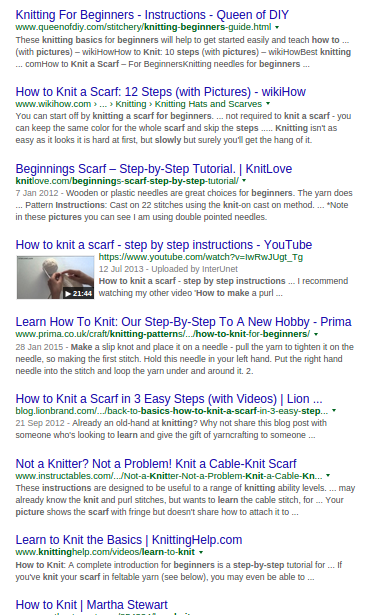



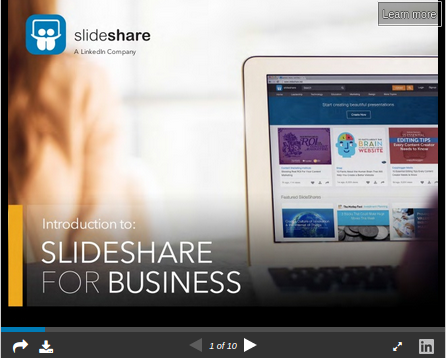






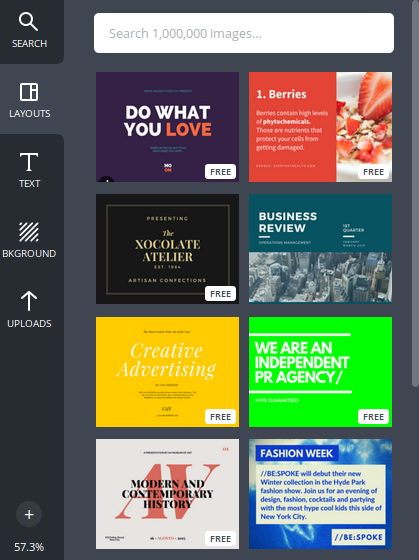
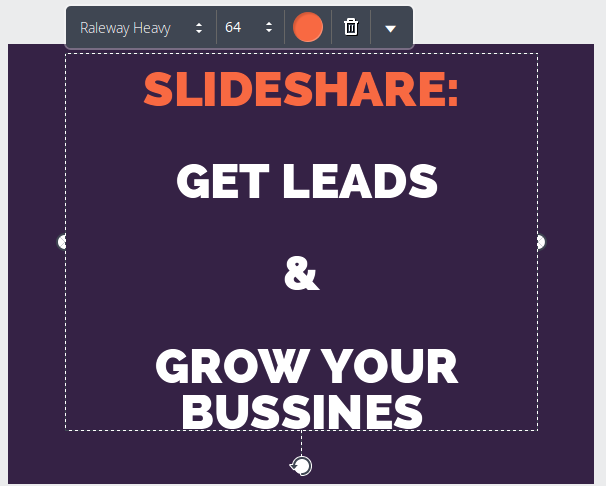



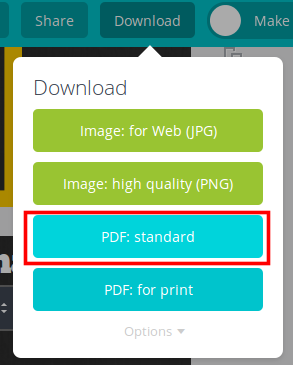

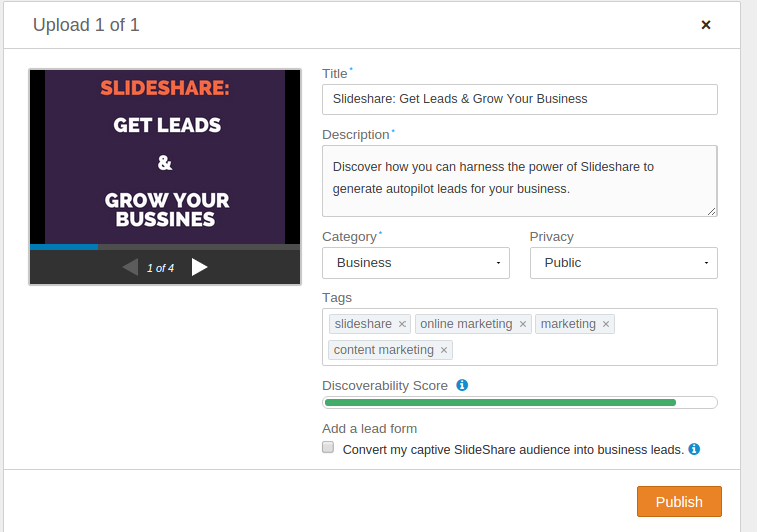



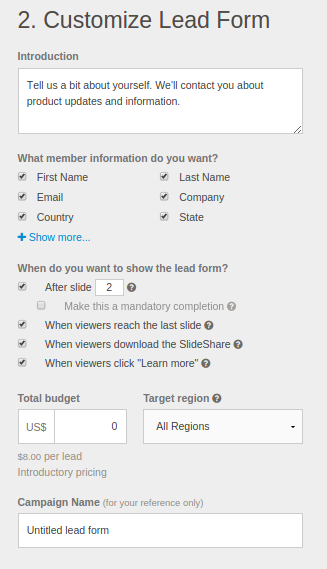


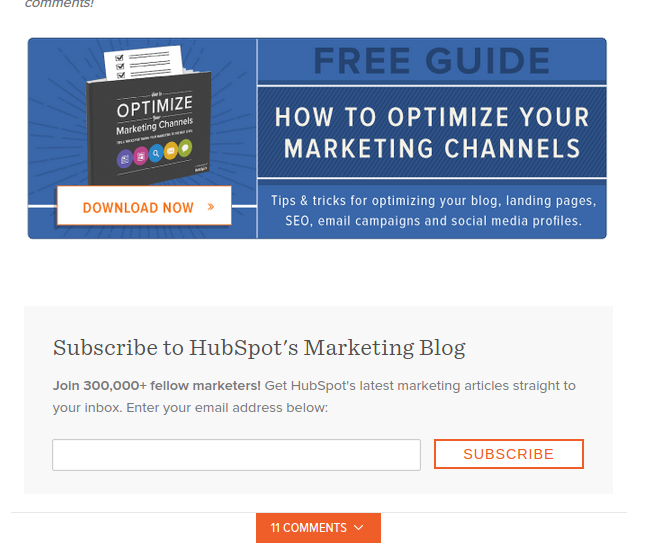



Comments (58)